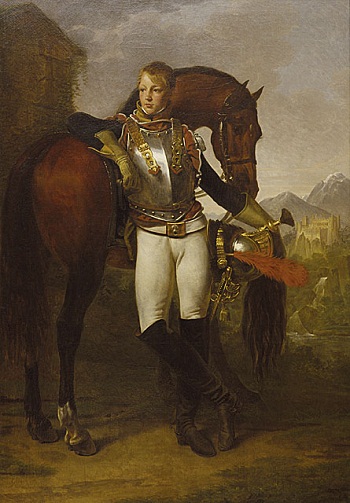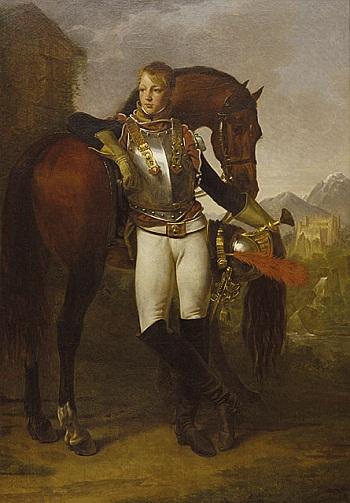The viewing of art is, in most cases, a deeply private adventure, and so it was for me upon my first time really seeing Baron Antoine-Jean Gros’ Portrait of Second Lieutenant Charles Legrand. I first viewed the painting not in its majestic place on the third level of the Ahmanson Building but in a small book about Romanticism by Norbert Wolf that I picked up after leaving a wonderful exhibition featuring English Romantic-era painters at the Tate Britain. Not only was Romanticism the most elusive and diffuse of all the art movements, but the word itself fell into a vast no-man’s land. Magically, this is where my adventure began—with the Romantic movement and Baron Gros’ masterpiece.

Antoine-Jean Gros, Portrait of Second Lieutenant Charles Legrand, c. 1810, gift of California Charities Foundation
Romanticism is the movement that was principally sustained by the belief that unbounded nature and human imagination—and not reason—are the sources of harmony, running contrary to traditional Greco-Roman antiquity. I was somewhat amazed that the Romantic ideals were looking back to the late medieval Gothic fantasies and Renaissance Judeo-Christian themes of love and terror, re-creating an emotional resonance out of a utopian ambition for this harmony. Their strident proclamation for individual creativity as the path to freedom and a reunion with nature was—or should be—humanity’s primary goal. Sometimes referred to as “the Counter-Enlightenment,” Romanticism seemed to become an artistic undercurrent to intellectual and progressive scientific thinking, therefore forging a new visual emotional language.
For me, there was an evocatively haunting presence in the poetry of the time, in the narrative arts that would be the voice behind the paintings, and in the mood that would capture the somewhat subversive glamour that made Romanticism such an engaging and magnetic force. It was the time of William Wordsworth, Lord Byron, John Keats, Ralph Waldo Emerson, and of course so many more. So, I would return to LACMA and Baron Gros’ Portrait of Second Lieutenant Charles Legrand with new eyes. Perhaps art only surrenders illusions, vague escaping spirits that we animate. Nevertheless, the second lieutenant’s whole persona was given up to poetic allusions—an elegiac muse—for he had not the steely eyes of a warrior but the gentle countenance of a Byronic poet looking elsewhere, having been on his ultimate “grand tour.” His warrior’s metallic chest plate serves to counterbalance the fleshy pink globe of his head and the blond wispy shag of his hair. As though lingering, untried youth reflects back through his soft paleness and the pout of his lips. His dark blue eyes betray another, more melancholic, time in his life. But more interesting, Gros catches the swagger and dash of a hero, propping himself on one leg casually against the hindquarter of his steed, with all the heft his gold suede clenched fist could suggest—while his actual death is merely a footnote to the eternity in oil that Baron Gros would bequeath him. As with all depictions of Romantic heroes, nature is situated in its vastness as a great blue distant sky, as snowcapped mountains, as foreign castles and running falls—as the backdrop to a man’s momentary drama. Lord Byron said it best:
So, we’ll go no more a-roving
So late into the night,
Though the heart be still as loving,
And the moon be still as bright.
For the sword outwears its sheath,
And the soul wears out the breast,
And the heart must pause to breathe,
And love itself have rest.
Hylan Booker



